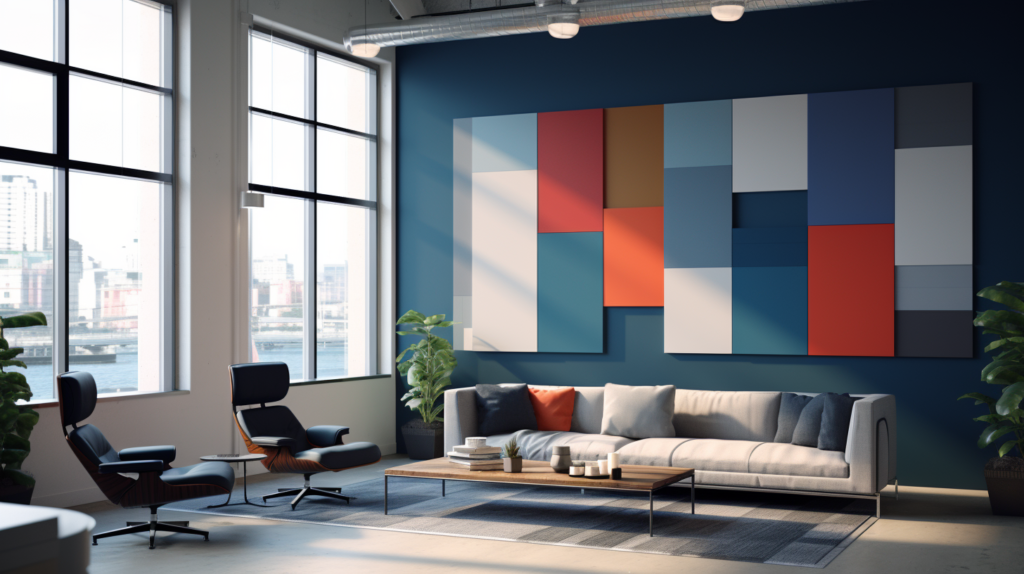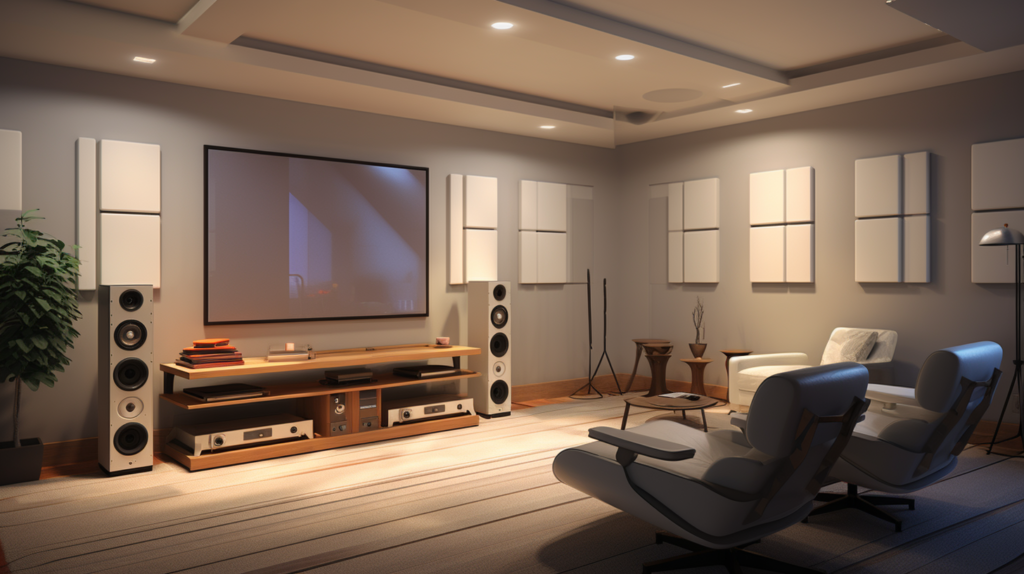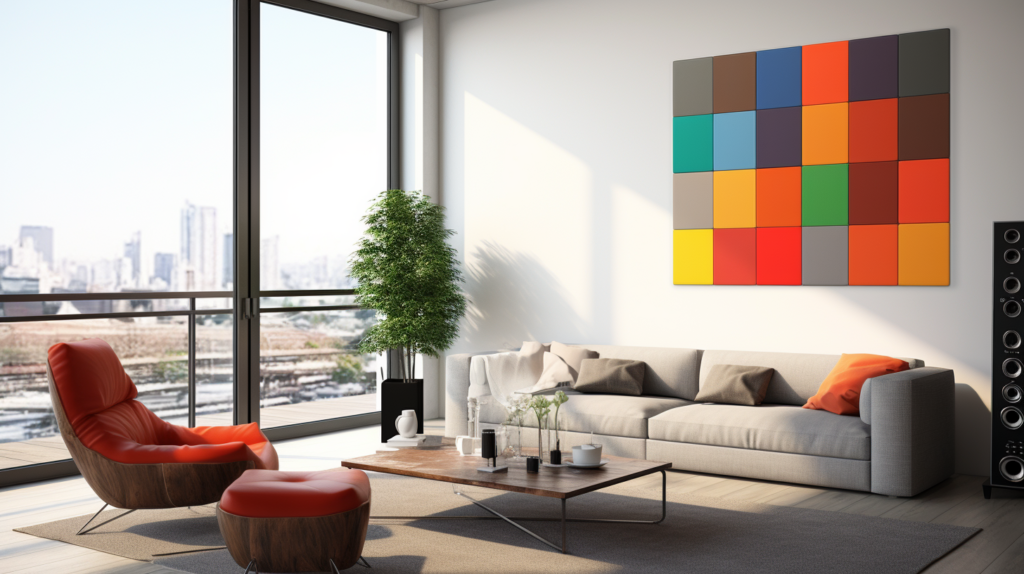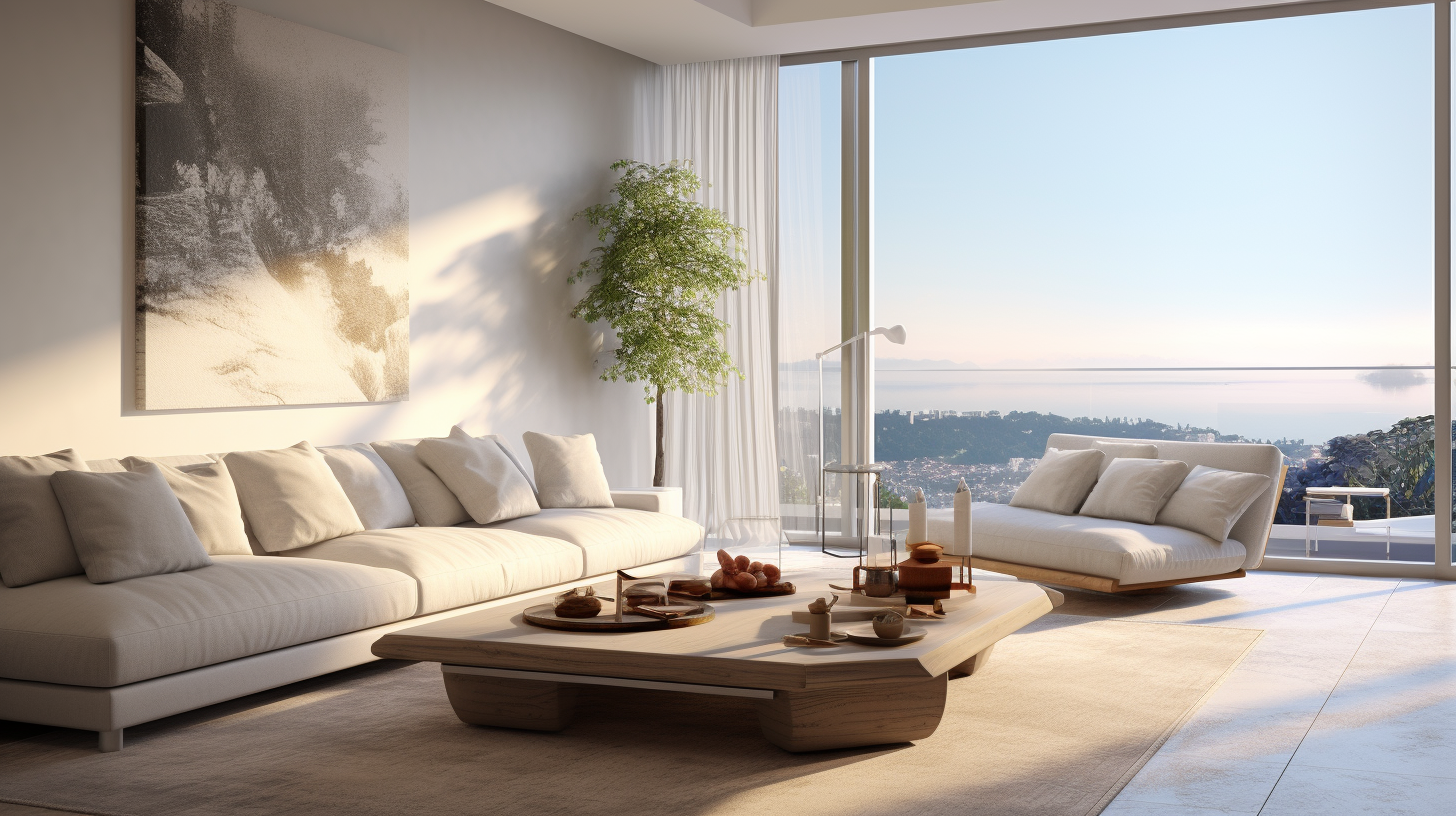Living in an apartment can feel like existing in an acoustic fishbowl.
Noises from surrounding units pass through paper thin walls as easily as sound travels through water.
Chatter, footsteps, music – in the world of multifamily housing, achieving peace and quiet presents an ongoing challenge.
Acoustic panels offer a compelling solution to absorb excessive sound and improve noisy apartment interiors.
When strategically installed, these sound-absorbing treatments can effectively minimize echoes, reduce reverberation, and enhance sonic quality within rooms.
With the right aesthetic approach, panels can blend discretely into existing decor as well.
Yet limitations exist in their ability to block sounds transmitting between spaces.
Let’s dive in and find out if acoustic panels do work in apartments and in what capacity can they help with acoustic treatment and soundproofing.
What Are Acoustic Panels and How Do They Work?

Acoustic panels, also referred to as sound-absorbing panels or sound absorbers, are interior finish materials specifically engineered to absorb or diffuse sound waves.
Unlike hard, reflective surfaces like drywall or concrete which allow sound reverberation, acoustic panels are made from porous, fibrous materials that effectively trap sound energy and convert it to minute levels of heat.
This absorption reduces excessive echo and reverberation, ultimately improving the overall sonic environment.
On a technical level, materials like fiberglass, plastic, fabric, or perforated wood utilized in acoustic panels work by scattering sound waves as they enter small cavities in the material.
Friction then converts the diverted sound energy into heat as fibers absorb the vibrations.
Effective acoustic panels will absorb frequencies across the sound spectrum rather than selectively absorbing specific bands. Broad spectrum absorption contributes to a balanced, neutral sound character.
Acoustic panels come in various forms including wall panels, baffles, clouds and bass traps.
Wall panels are installed directly on interior surfaces while baffles mount to walls or hang from ceilings via suspension cables in floating arrangements.
Clouds (also called canopies) commonly mount above mixing consoles or other equipment that benefits from sound diffusion.
Corner bass traps treat low frequency resonances in room corners that cause booming.
Strategic placement of these absorptive treatments enables control over the sonic environment within a space. Panels treat sound at the point of reflection, absorption or diffusion.
This reduces excessive reverberation caused by soundwaves bouncing repeatedly off hard surfaces.
By damping resonant frequencies and minimizing prolonged energy decays, the time interval for reverberation is shortened.
The goal is to optimize the acoustic response to match the purpose of the room, whether for recording, theaters, communication clarity or other critical listening needs.
Do Acoustic Panels Work In Apartments Reducing Noise in a Space?

The primary role of acoustic panels is absorbing sound and reducing noise within an enclosed area.
They excel at minimizing excessive reflections and shortening reverberation decay times within a room.
Acoustic panels can be installed to help with reducing the noise transmission between two spaces but not structure-borne noises.
Sound passes through walls, ceilings and floors via both airborne and structure-borne paths.
Airborne sound radiates directly through wall cavities as audible sound waves.
Structure-borne noise transfers through the actual building structure materials in the form of vibration.
Common sources of structure-borne noises in apartments include footsteps, furniture moving, and bass from music or home theaters.
Acoustic absorption panels address only the airborne path of sound traveling through the air in a room.
More intricate methods like staggered-stud walls, insulation, vibration damping and mass-loaded vinyl barriers target both air and structure-borne noises for effective sound isolation between units.
Can Acoustic Panels Work In Apartments For Soundproofing?

On their own, standard acoustic panels do not sufficiently block sound transmission between rooms for soundproofing purposes.
However, some types when installed properly can help reduce airborne noise infiltration through walls and ceilings.
Polyester-fiber panels in particular, when mounted flush side-by-side covering entire wall sections, provide a continuous sound absorbing blanket that impedes sound passage through the wall cavity.
This method intercepts and traps airborne sound waves, blocking reverberant buildup in the cavity itself that otherwise transmits vibrations into adjoining spaces.
Heavy mass-loaded vinyl layers add density for increased sound barrier effectiveness.
Yet even these types of substantial installations only address the direct airborne path of noise transfer, not structure-borne transmissions through the actual building framework.
Where Should I Install Acoustic Panels In My Apartment?

For apartments and condos, it is recommended to install acoustic panels on walls of rooms where controlling sound reflections and reverberation are most critical.
These usually include bedrooms, home offices, living rooms and music practice rooms.
Panels placed strategically on wall sections at the relevant reflection points help absorb and diffuse sound most effectively.
Spreading panels out in a distributed fashion rather than clustering in one spot treats the room evenly.
Typical first reflection points to treat are at ear height on surrounding walls lateral to seating positions.
This stops short reverberation caused by sound bouncing directly back toward the listener.
Panels near speakers also prevent back-and-forth echo between the sound source and opposite wall.
For home theater spaces, additional bass trapping panels in corners are ideal for reducing low frequency modal resonances that lead to boomy, muddy sound.
In open concept great rooms incorporating both living and dining areas, distributed wall panels and hanging baffles help minimize excessive reverberation and chatter echoes.
In home offices, recording studios and other spaces where communication clarity is key, a higher concentration of panels tuning the acoustics helps remove distracting coloration and ambient distortion.
What Types of Acoustic Panels Work Best in Apartments?

For apartments and condominiums, ultra-lightweight acoustic panels tend to be the most suitable permanent solution.
Heavier panels manufactured from dense materials like wood, melamine, mineral wool or calcium silicate while very effective, often prove impractical in homes.
The ability to easily remove panels with no damage is a benefit for rental apartments.
Polyester fiber acoustic panels have become a popular apartment choice given their ultra-light weight, low cost and sound absorption capabilities.
Polyester fiber felts provide excellent acoustic properties, absorbing a wide band of frequencies rather than selective bands.
The fiber construction and porous nature of polyester effectively trap sound waves entering the material through friction, converting vibrations into heat energy.
Polyester acoustic panels as thin as one inch demonstrate meaningful noise reduction values.
Polyester panels can also block sound transmission with proper installation and not just absorption.
When installed in a flushed manner, side-by-side covering an entire surface, these polyester acoustic panels can help in reducing airborne noise between two spaces.
For example between that shared wall that you and your neighbour shares.
Do Acoustic Panels Look Nice In Apartments?

With the wide range of panel styles, sizes, shapes, colors and prints now available, acoustic treatments do not have to appear tacky or out of place visually.
Today’s interior acoustics products allow flexibility to complement almost any color palette or design motif.
Acoustic Wall panels come in solid colors or vibrant fabric prints to matching existing furnishings and paint colors.
Choosing panels with the same hue as walls camouflages them into the architecture for a streamlined look.
Polyester panels add warmth while perforated metal and plastic provide modern flair.
Ceiling clouds and hanging baffles composed of felt blends come in varied configurations including waves, rings, corrugated patterns and 3D cube arrangements.
Creative use of lighting such as wall washing panels highlights them as intentional design elements.
Recessing panels slightly casts shadows that lend dimensional texture.
Acoustic panels in geometric shapes create artistic focal points.
With innovative thinking and use of materials like fabric, the possibilities are vast for acoustic treatments to enhance decor instead of detract from it.
Maintaining a minimalist approach avoids the cluttered vibe.
Conclusion
In summary, acoustic panels can effectively absorb excessive noise, reduce problematic sound reflections and improve interior acoustics when properly installed in apartments.
Lightweight, polyester fiber acoustic panels represent an ideal apartment sound absorbing solution given their cost, weight and sound control capabilities.
Acoustic panels work best when strategically positioned in rooms where sound quality is most important such as bedrooms and offices.
While helpful for reducing within-unit noise, traditional acoustic panels alone do not adequately block sound transmission between adjacent spaces for complete soundproofing.
Still by incorporating good design aesthetics, they represent one useful tactic in an overall apartment noise reduction approach.
With realistic expectations about their noise blocking limits between walls, acoustic panels can improve apartment interiors both visually and acoustically.
